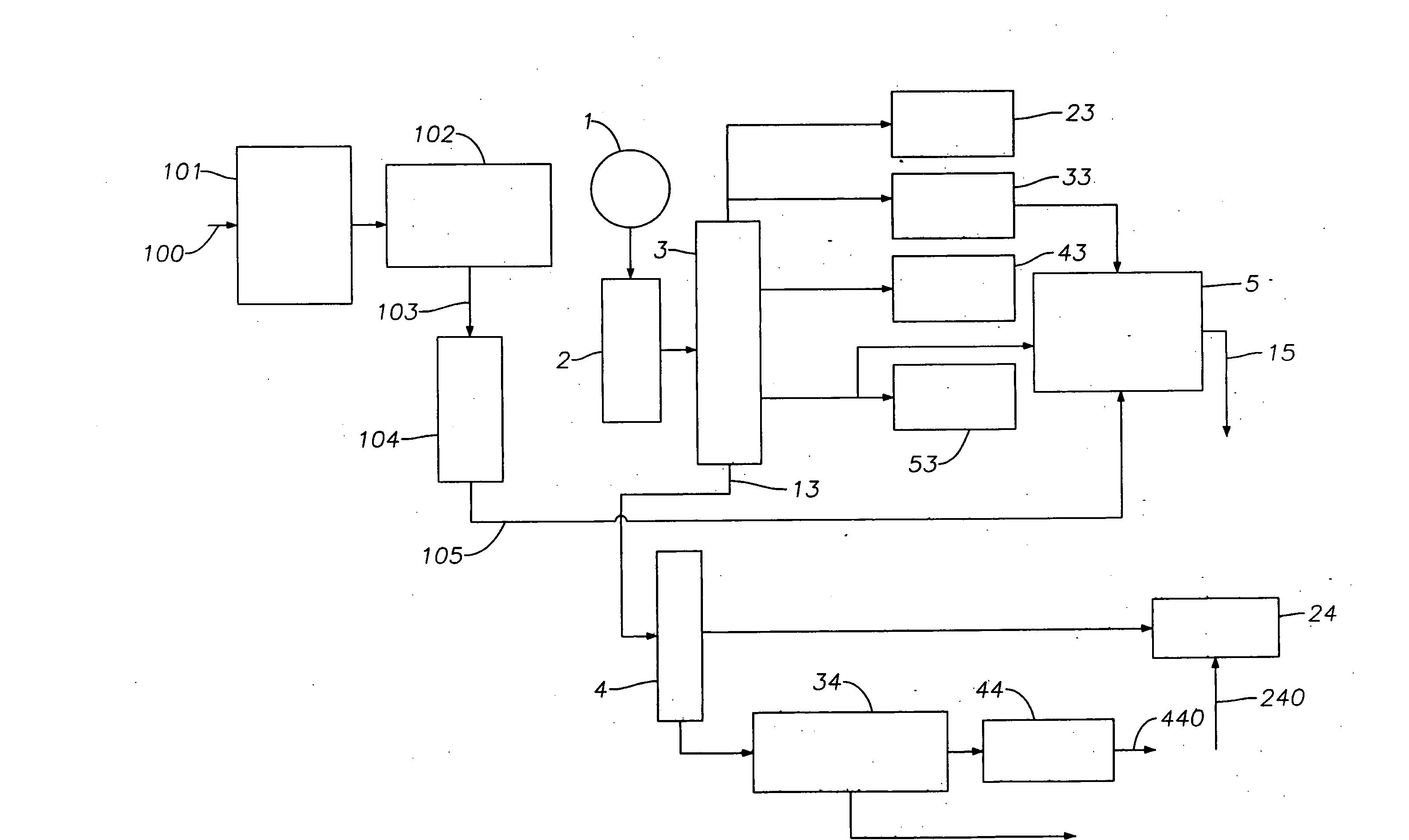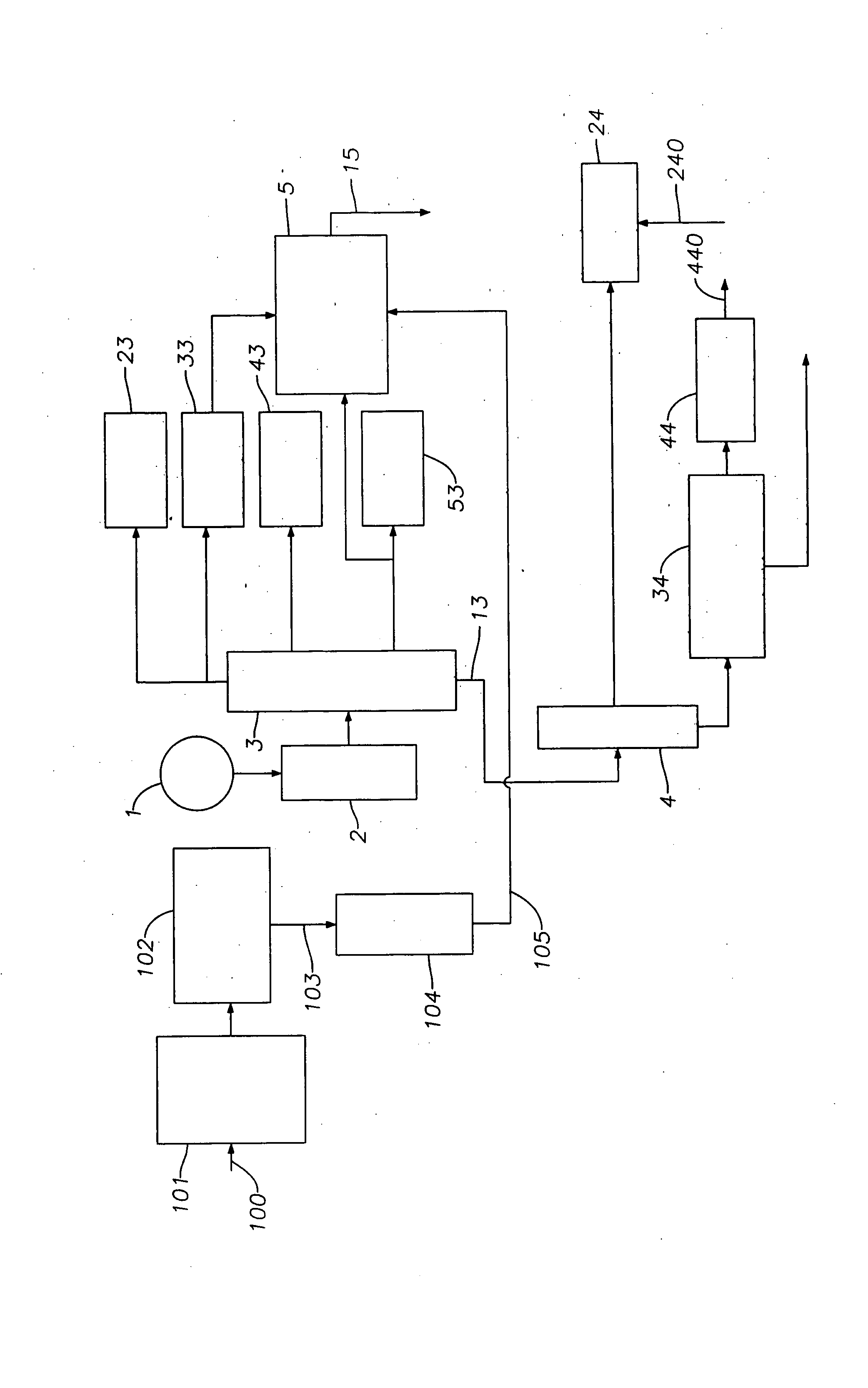Disposition of steam cracked tar
a technology of cracking tar and discharging slag, which is applied in the direction of hydrocarbon oil treatment, chemical/physical/physical/chemical process, chemical/physical/physical-chemical process, etc., can solve the problems of increasing the difficulty of discharging, increasing the amount of tar produced, and incompatible sct, so as to improve the yield of higher-end products and efficient use of hydrotreaters
- Summary
- Abstract
- Description
- Claims
- Application Information
AI Technical Summary
Benefits of technology
Problems solved by technology
Method used
Image
Examples
example
[0045]The following example is meant to illustrate the present invention and not limit it. Numerous modifications and variations are possible and it is to be understood that within the scope of the appended claims, the invention may be practiced otherwise than as specifically described herein.
[0046]Referring to FIG. 1, crude oil 1 is desalted in desalting apparatus 2 of a type well-known in the art and supplied an atmospheric pipestill (APS) 3 wherein it is separated into a plurality of streams, such as a portion boiling below 320° F. which may be sent to a naphtha hydrofiner 23 and natural gas which may be sent to a hydrogen plant 33 to supply hydrogen to the hydrotreater 5 downstream of the APS, a cut having a boiling point range of about 320° F. to about 450° F. sent to hydrofiner 43 to produce jet fuel and / or kerosene, and a cut having a boiling point between about 450° F. and 580° F., a portion of which may be sent to the hydrotreater 5 and a portion of which may be sent to the...
PUM
| Property | Measurement | Unit |
|---|---|---|
| pressure | aaaaa | aaaaa |
| pressure | aaaaa | aaaaa |
| temperature | aaaaa | aaaaa |
Abstract
Description
Claims
Application Information
 Login to View More
Login to View More - R&D
- Intellectual Property
- Life Sciences
- Materials
- Tech Scout
- Unparalleled Data Quality
- Higher Quality Content
- 60% Fewer Hallucinations
Browse by: Latest US Patents, China's latest patents, Technical Efficacy Thesaurus, Application Domain, Technology Topic, Popular Technical Reports.
© 2025 PatSnap. All rights reserved.Legal|Privacy policy|Modern Slavery Act Transparency Statement|Sitemap|About US| Contact US: help@patsnap.com


